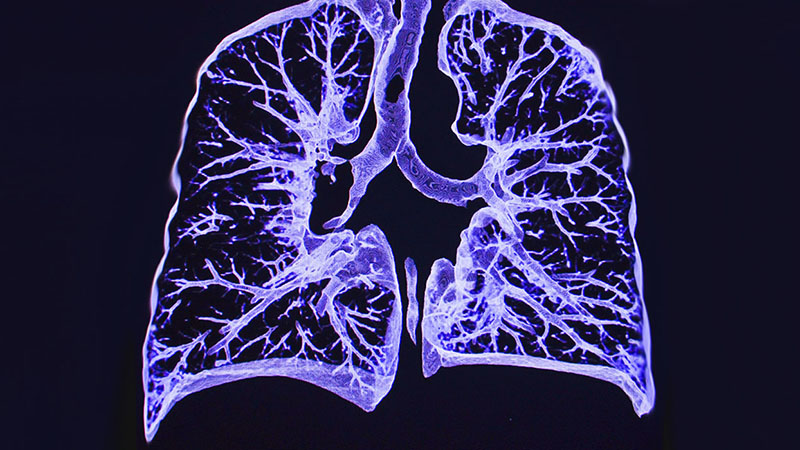Lung Diseases Program
On a normal day, you breathe 25,000 times. Lung disease prevents your body from getting enough oxygen each time you breathe. Millions of Americans suffer from lung disease, making it the third greatest cause of death in the United States.
There are three main types of lung disease, including:
- Airway diseases: These conditions affect the tubes (or airways) that carry air into and out of the lungs. Diseases such as asthma, emphysema and chronic bronchitis narrow or block these airways, making you feel like you are breathing through a straw.
- Lung tissue diseases: Diseases such as pulmonary fibrosis and sarcoidosis affect the structure of the lung tissue through inflammation or scarring. Lung tissue changes prevent the lungs from fully expanding, making it hard for you to take a deep breath to take in oxygen or expel carbon dioxide.
- Lung circulation diseases: These affect the blood vessels in the lungs, caused by inflammation, clotting or scaring of the pulmonary blood vessels. This affects the ability of the lungs to take up oxygen or expel carbon dioxide, and this may also affect the functioning of the heart.
Lung disease can take many forms, including:
- Lung cancer
- Lung infections such as influenza and pneumonia
- Asthma and chronic bronchitis
- Sarcoidosis and pulmonary fibrosis
- Chronic obstructive pulmonary disease (COPD) and emphysema
- Pulmonary edema
Meet the Teams

The Northwestern Medicine Lung Diseases teams provide complete diagnostic and treatment services and facilities for patients with all types of respiratory diseases.
Types of Lung Disease
Tests
Treatments
Locations & Contact Information
Related Resources
- What is Lung Cancer?: Find out more about the two main types of lung cancer and how they can spread.
- Treatment for COPD: Learn what you can do to minimize your symptoms of chronic obstructive pulmonary disease.





